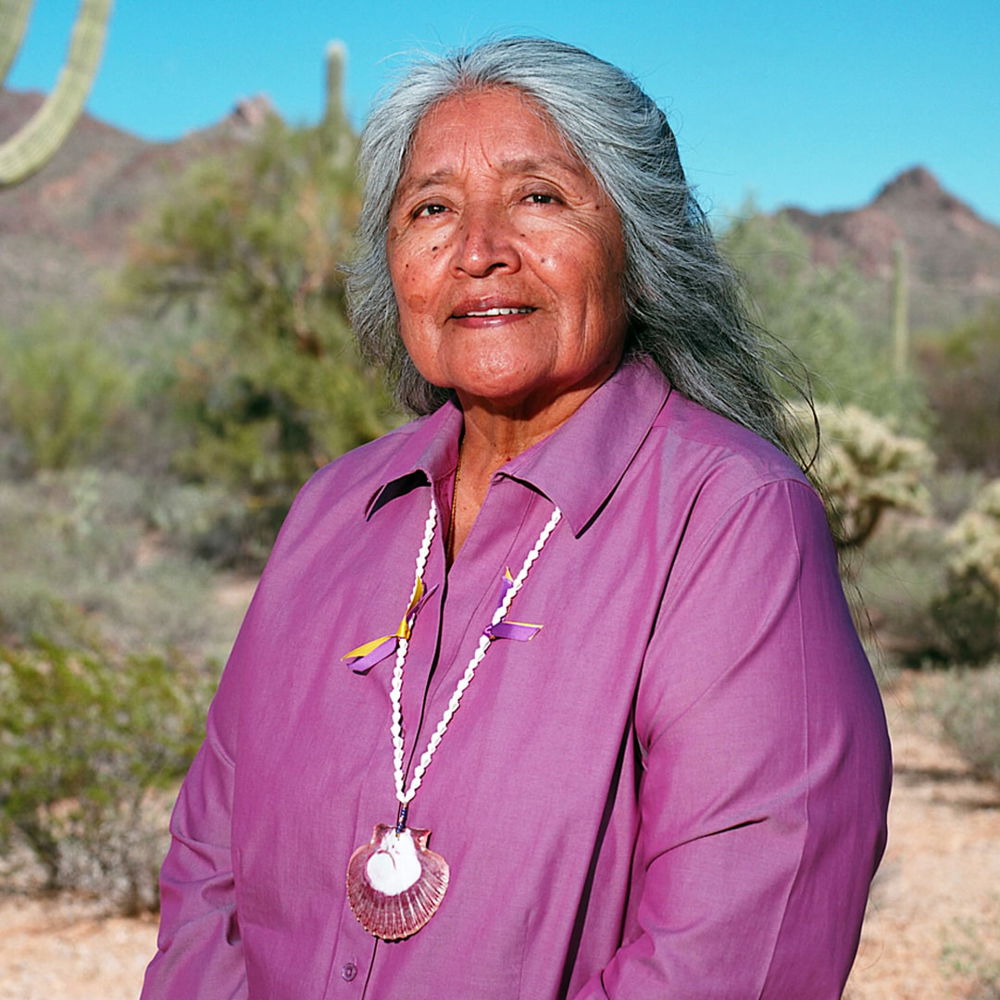
Photo by Tony Celentano.
Ofelia Zepeda is a member of the Tohono O'odham Nation and is Regents Professor of Linguistics at the University of Arizona. Zepeda is the recipient of a MacArthur Fellowship for her work in American Indian language education and recovery. She is Director of the American Indian Language Development Institute (AILDI) serving Native American language educators, researchers, and activists. She is the author of the first pedagogical grammar on the O’odham language, A Tohono O’odham Grammar. She is a member of the International Task force for the UNESCO International Decade of Indigenous languages (2022–2032) representing Indigenous peoples of the US.
She writes in O’odham and English and has four books of poetry: Ocean Power: Poems from the Desert; Jewed I-hoi/Earth Movements; Where Clouds are Formed; and Aligning Our World, with French translation and Linotype artwork by Pierre Cayol. She is editor of Mat Hekid o Ju:/When It Rains: Pima and Papago Poetry. Her poems have appeared in numerous anthologies including Sonoran Desert: A Literary Field Guide, edited by Eric Magrane and Christopher Cokinos, and Dear Vaccine: Global Voices Speak to the Pandemic, edited by Naomi Shihab Nye, David Hassler, and Tyler Meier. She is the poet collaborator on the project, “Where Clouds are Formed: A Photographic Essay,” on the US border as it intersects Tohono O’odham lands. In 2021 Zepeda’s work appeared in, When The Light of The World was Subdued, Our Songs Came Through, edited by Joy Harjo, US Poet Laureate.
Donor -This award was generously supported by the Mellon Foundation.
This artist page was last updated on: 07.12.2024
Poem by Ofelia Zepeda.
Poem by Ofelia Zepeda.
Poem by Ofelia Zepeda.